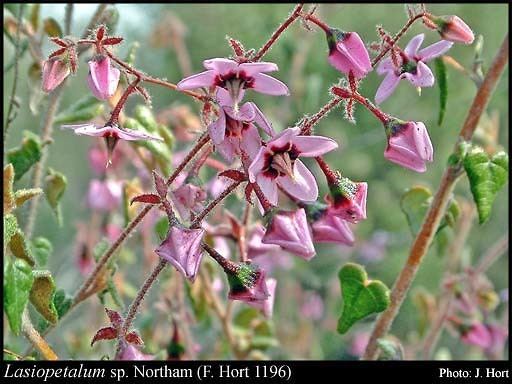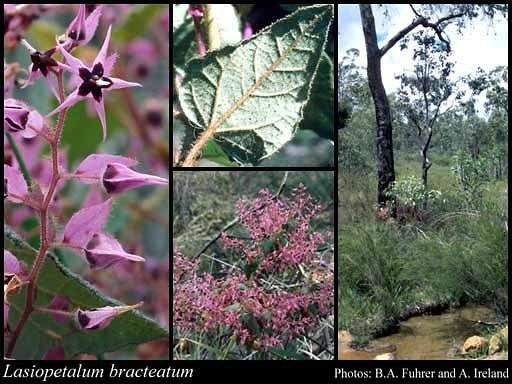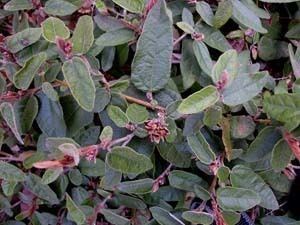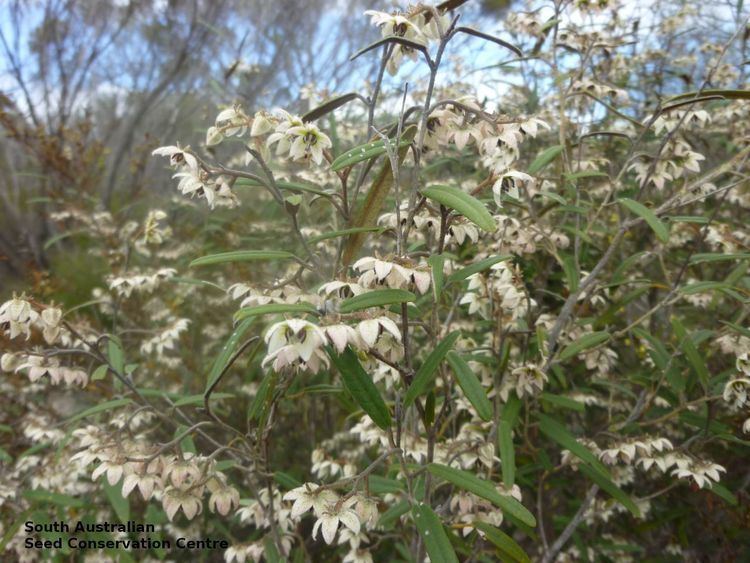Subfamily Byttnerioideae Rank Genus | ||
 | ||
Similar Thomasia, Guichenotia, Keraudrenia, Lysiosepalum, Rulingia | ||
Lasiopetalum (velvet bushes) is a genus in the family Malvaceae containing around 35 species of shrub, which are native to Australia.
Contents
- Maq00379 jorgeefrainbravo salgado on flor pentagonal lasiopetalum malvaceae
- Taxonomy
- Description
- Species
- References

It is allied to the genera Guichenotia and Thomasia. The greatest diversity of species is in Western Australia, where 24 species are found of which 8 are endemic to the region. Species occur in lowland sclerophyll forest and heathland habitats.

Maq00379 jorgeefrainbravo salgado on flor pentagonal lasiopetalum malvaceae
Taxonomy

The genus was first defined in 1798 by James Edward Smith, who did not designate a type species. The genus name is derived from the Ancient Greek word lasios "hairy", and the Botanical Greek petalon "petal", and refers to the hairy calyx. Lasiopetalum was previously classified in the family Sterculiaceae, however that family has been sunk into an expanded Malvaceae. Within the family, it gives its name to its tribe Lasiopetaleae, which contains about ten genera, located mostly in Australia. It is closely related to Guichenotia, although the exact relationship and genus delineation is unclear pending further research.
Description

Most species are spreading or prostrate many-branched shrubs. Commonly known as velvet bushes, they derive their common name from the pubescent (finely-furred) nature of the stems, leaves and flowers. Their leaves are generally arranged alternately on the stems. The flowerheads are either axillary or terminal. The flowers are small, the five-lobed calyces are hairy and the petals tiny.
The genus is rarely cultivated, although many species have flushes of attractive reddish hairy new growth, and several were cultivated in England in the 19th century.
Species
Species include:
